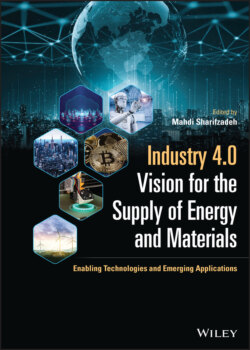Читать книгу Industry 4.0 Vision for the Supply of Energy and Materials - Группа авторов - Страница 56
1.6.1.2 Radio Resource Management
ОглавлениеThe rise of ultra-dense and dynamic wireless networks in the Industry 4.0 paradigm implies a further number of simultaneous transmissions. Therefore, it is necessary to efficiently utilize limited wireless resources such as RF spectrum resources and radio network infrastructure to fulfill strict QoS requirements and achieve a reasonable level of performance across IIoT systems. Radio resource management (RRM) involves strategies and algorithms that manage radio transmission for reliable service delivery in dynamic and diverse wireless networks.
The fundamental challenge in IIoT wireless communication is cross-technology interference combined with harsh signal propagation conditions in industrial systems. This results in deficient networks performance and service failures regardless of prudent initiatives [172]. One possible solution for interference mitigation is coexistence mechanisms. There are two principal concerns in the design of coexistence mechanisms: interference management and load balancing [173]. Since RRM includes transmission power management, radio resources scheduling, user allocation, and preventive–reactive congestion control, effective RRM procedures could be exploited in coexistence mechanisms to mitigate the interference level. Another possible approach to avoid wireless networks interference is the employment of cognitive radio channel sensing of the ambient
radio environments to detect availability of channels. Subsequently, RRM is performed on the clear channels through optimizing proper channel features for data transmission [174, 175]. In addition to reliable link, RRM involves strategies for controlling power transmission, which is particularly important for IIoT devices working on batteries.
